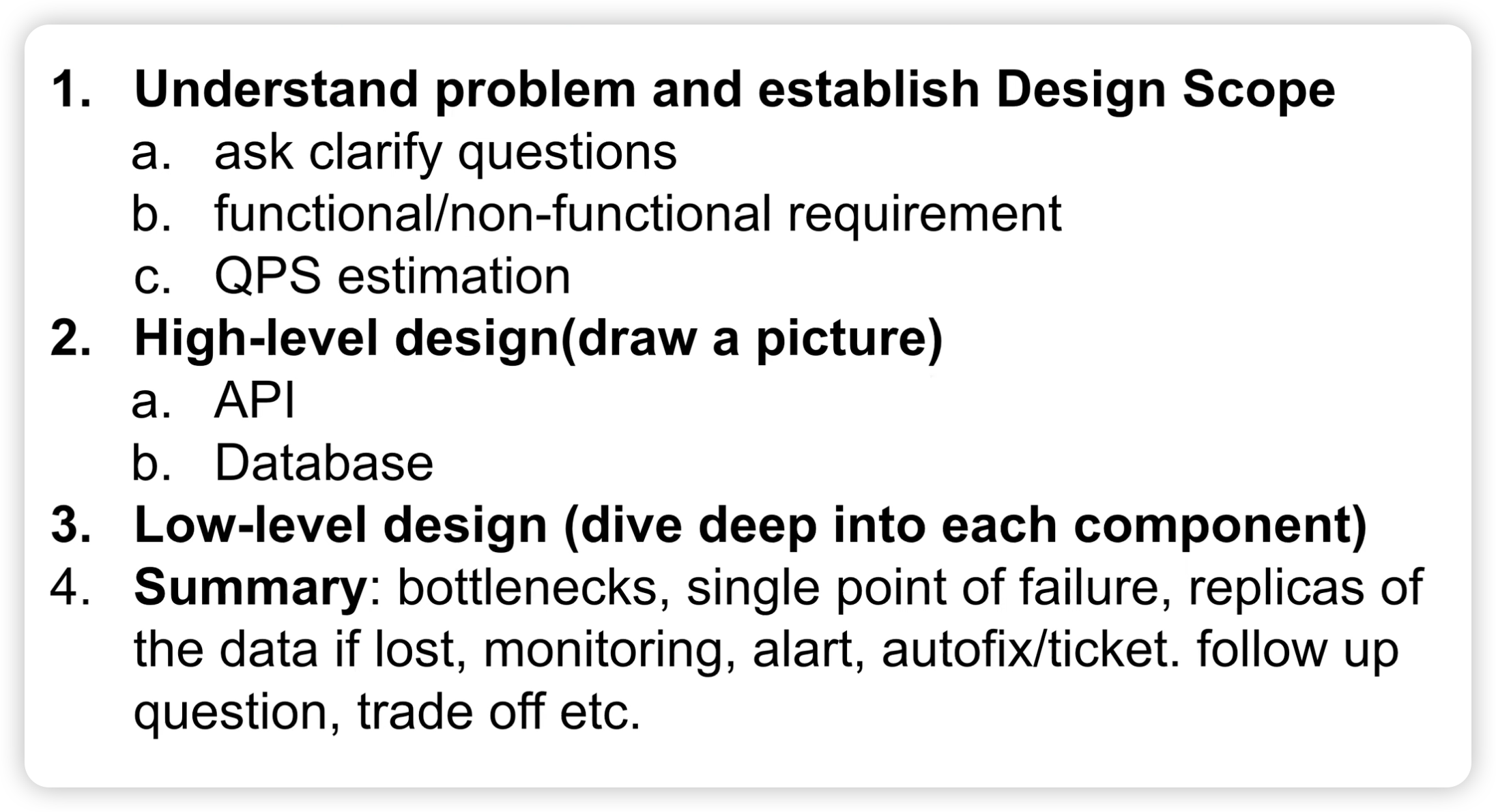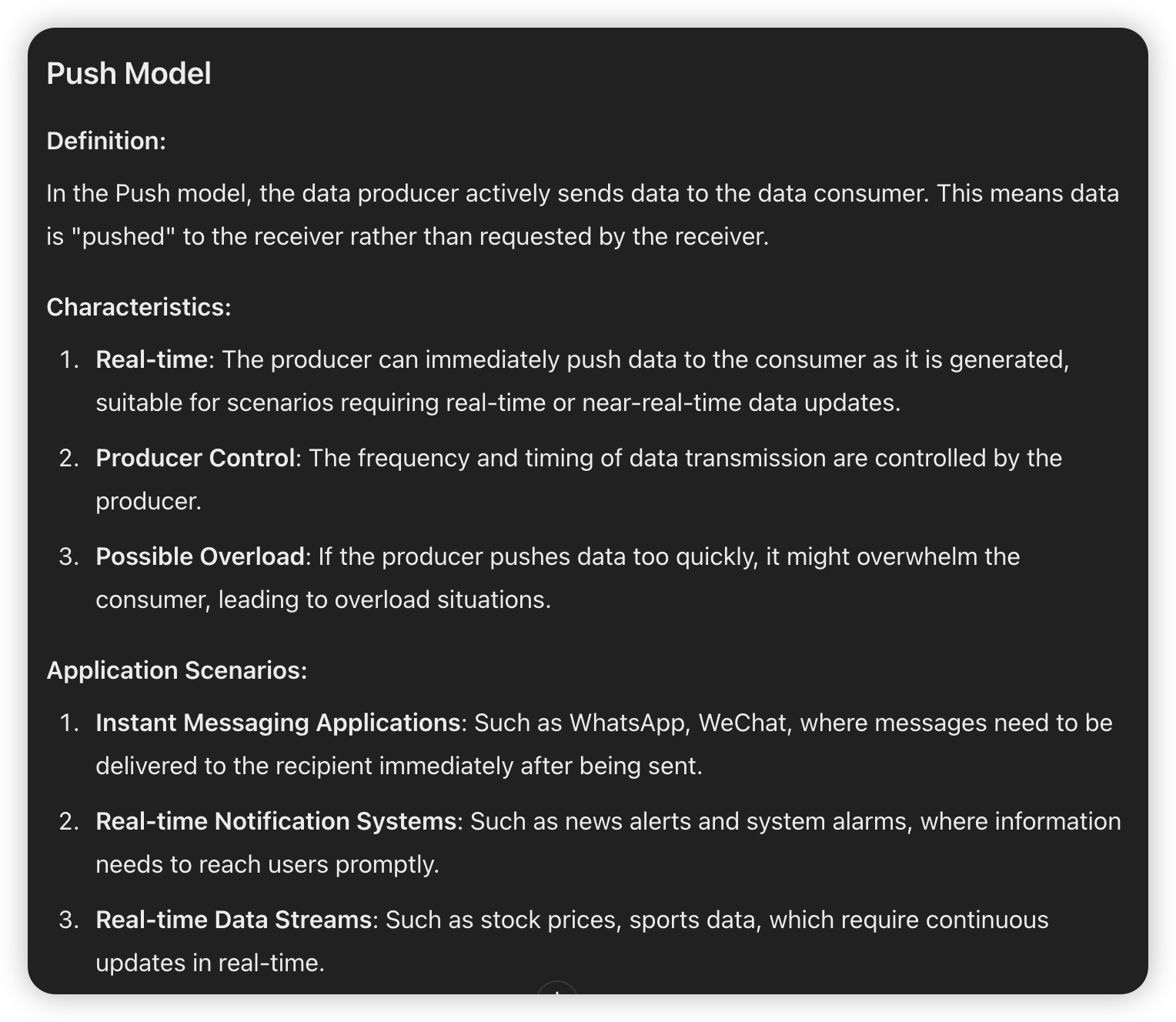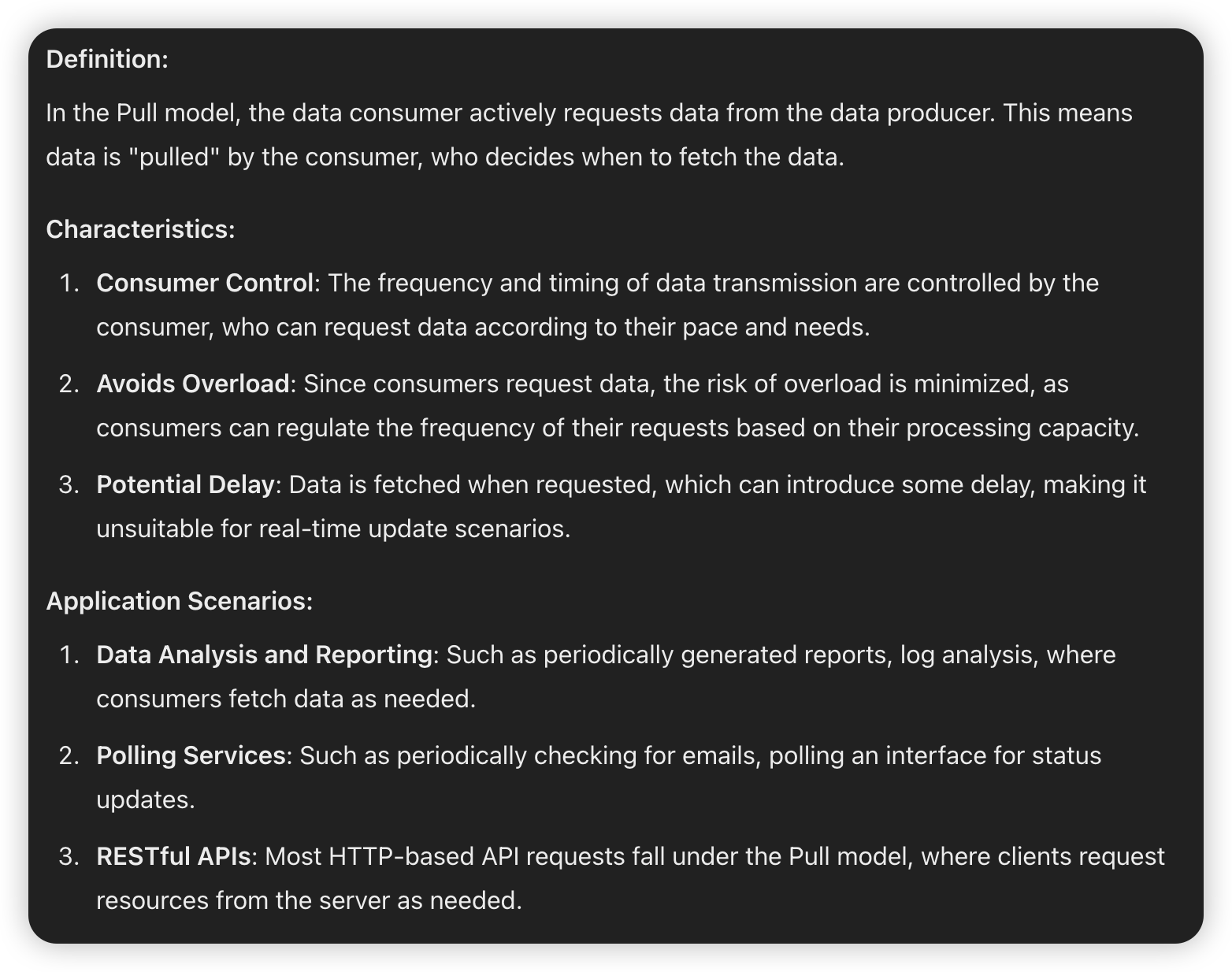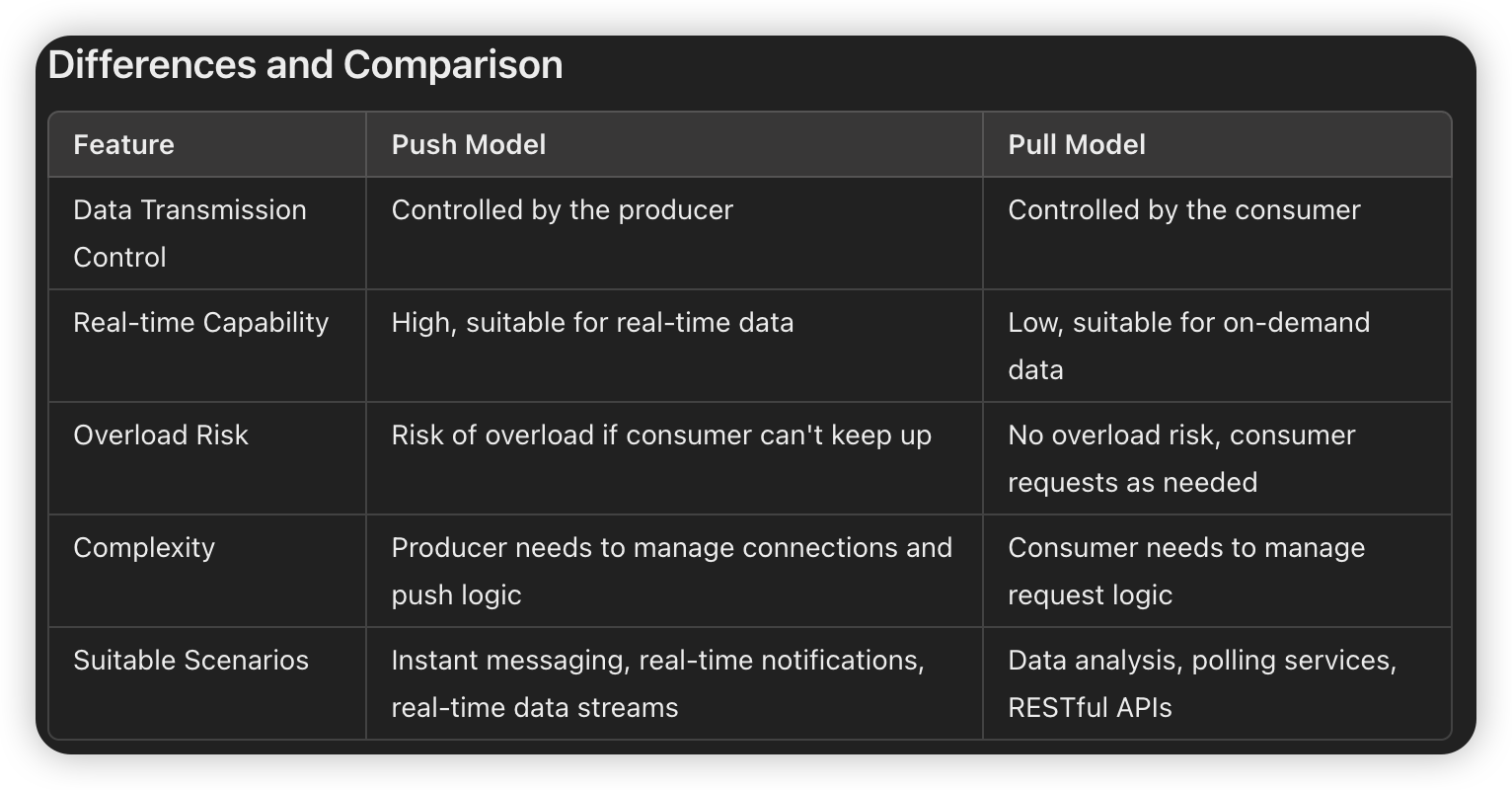Steps of system design: non-functional requirement: - latency - reliability - consistency
QPS: - Total user * 10% = Daily Active User (DAU) - Concurrent user = DAU * 10% - Calculate update time T - QPS = Concurrent user / T

Q: which to use as application layer? RESTful API or WebSocket?
WebSocket:
- Use: Used to establish long-lived connections for full-duplex communication. It is ideal for real-time data transmission and low-latency applications, such as instant messaging, real-time gaming, stock tickers, etc.
- Characteristics: Once a connection is established, both the client and server can send data to each other at any time without reopening the connection.
RESTful API:
- Use: Used to implement a client-server communication model based on request/response. It is suitable for resource-oriented operations, such as fetching, creating, updating, and deleting data (CRUD operations).
- Characteristics: Each client request is sent via the HTTP protocol, and after the server responds, the connection is closed. The requests are stateless, meaning each request is independent and does not rely on previous interactions.
Q: what is the difference between Kafka and Redis?
- Kafka supports a pull-based system where publishers and subscribers share a common message queue from which subscribers pull messages as needed.
- Redis supports a push-based system where the publisher distributes messages to all subscribers when an event occurs.
Q: when to use push or pull model?
- push model: producer → consumer

- pull model: producer ← consumer

- comparison:
